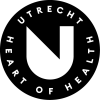HHU UPDATE
Ja, ik schrijf me in voor de twee-wekelijkse update van Health Hub Utrecht




During the minor “Design for Social Change” from Hogeschool voor de Kunsten Utrecht (HKU) six enthusiastic students, under the name of Cloudfuel, were busy for several months critically examining the mental toughness of young people. The group consisted of Karijn Bakker (BA in Creative Business), Renee van Dijk (BA in Arts and Economics) Johanna Gibelin (BA in Visual Designer) Iva Matiyas following (BA in Cultural Manager), Thimo Steehouder (Communication and Multimedia Design) and Isis Peene (BA Art Communication and Design.)
During a period of 5 months, Cloudfuel developed six imaginative and creative methods to help children develop mental resilience in the current high-speed society. The six creative methods altogether are called MINDCRAFT and form a starter mental toolkit for children to discover their ways to deal with mental distress.
Through new creative avenues and new perspectives, they try to look at complex issues such as the performance society, the normalization of negative emotions and the system in which young people are involved. They conducted research based on the Frame Innovation Method and then embarked on innovative design directions. Despite all the new advanced methods and techniques, complex issues are still not always solved. Because the subject of youth well-being is so complex, dynamic, and networked, the whole field is needed to tackle it. Although the issues are therefore open, the ways of working, thinking, and organizing are not always so. Cloudfuel, therefore, asked themselves to think differently, because the current way of thinking only keeps the problem more instant. By looking at the resilience of young people from a new and original angle, developing prototypes, testing this, and improving it iteratively, they come closer and closer to the core. In this way, space is created to discover which new solution directions are possible in a joint process with the parties involved, KOOS & Lokalis from Utrecht.
Since we first developed MINDCRAFT we have been in contact with children and youngster institutions like KOOS and Lokalis to find ways to implement the toolkit in a primary school. The toolkit is meant for children between the ages of 10 and 13 and is most effective when there is a person who helps reflect on their experiences with the different tools. A teacher is the perfect example of a supervisor who can explain and guide the children while using the toolkit. It is not implemented in a primary school yet, but we have done experiments with certain children and have had very positive feedback from children, parents and teachers about their experiences with MINDCRAFT. We hope to continue implementing the toolkit in primary schools in the future so more children can start discovering their minds!
At the moment, we are discussing the options and possibilities to move forward. Next to this, each one of us is continuing with our studies, but also, completing masters, internships or part-time work. We maintain our hope for the future to implement MINDCRAFT in schools with children from our target group. We feel very proud of the outcome and continuously share with our networks the knowledge we have gained after completing this project.
https://mindcrafthku.wixsite.com/minor

2023 © Health Hub Utrecht Design & Support Centre
Ja, ik schrijf me in voor de twee-wekelijkse update van Health Hub Utrecht